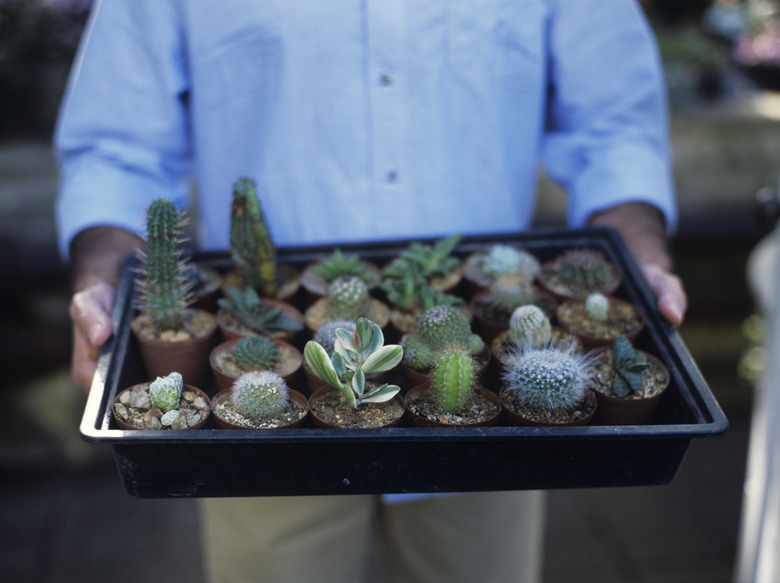Are Succulents Poisonous To Dogs?
Succulents are plants that store water in their tissues to ensure they have a steady supply of moisture during periods of drought. Many people think of cacti when they hear the term succulent, but there are several genera of plants classified as succulents. Some have prickles and are leafless, while others are smooth and leafy. Many succulent plants have poisonous parts that can harm your dog, and some of these are extremely toxic if ingested.
Identifying a Succulent Plant
While many gardeners easily identify cacti as succulents, any plant with fleshy leaves or stems that store water is a succulent. However, not all have spikes or thorns. Many are also bitter-tasting or toxic. Succulents are categorized as stem succulents or leaf succulents depending on their form. Stem succulents, which include cacti, often have tiny leaves or no leaves at all, and fleshy stems that are often columnar or barrel shaped. Leaf succulents, such as agave species, resemble nonsucculent plants, but the leaves are small and fleshy because they store water. The stems of these succulents are compressed, and typically contain a rosette of fleshy leaves.
Signs of Trouble
Dogs exhibit several symptoms if they've ingested a poisonous succulent plant, and these can vary widely depending on plant species, the amount ingested and your dog's size, age and general health. Typically, though, poisoning symptoms include vomiting, diarrhea, mouth irritation, excessive salivation, loss of appetite and in severe poisoning, loss of consciousness or convulsions.
Succulents to Keep Away From Dogs
While there are many succulent plant species that may be toxic to your dog, there are a few commonly grown by home gardeners both indoors and outdoors. While you may not grow these plants, a neighbor may have these species growing outside. Agave species, such as the century plant (Agave Americana), which is hardy in USDA zones 9 through 11, contain compounds that may lead to vomiting or diarrhea, and oxalate crystals, which can irritate your dog's mouth, skin, tongue and throat, leading to swelling, difficulty breathing and stomach upset. Dracaena species, hardy in zones 10 through 12, contain saponins that are toxic to your dog, and plants in the kalanchoe genus, most of which are hardy in USDA zones 9 through 11, can cause vomiting, diarrhea and heart arrhythmias if ingested by your dog. Dieffenbachia species, hardy in zones 10B through 11A, can also cause intense irritation of the mouth, as well as drooling nausea, vomiting and difficulty swallowing. The Euphorbia genus, which varies in hardiness depending on species, is particularly dangerous for dogs. This genus has thousands of species of succulents, all of which ooze a corrosive and toxic milky white sap.
If Your Dog Ingests Succulent Parts
The safest way to protect your dog from ingesting a poisonous succulent plant is to keep all succulents out of reach. If your dog eats any part of a succulent plant, contact your veterinarian or the ASPCA's animal poison control center at 888-426-4435 immediately. If you're not sure what type of plant your dog has ingested, but it exhibits symptoms of poisoning such as vomiting, excessive salivation, diarrhea or any other unusual behavior, contact your veterinarian.
References
- Cactus and Succulent Society of Alberta: Grow Succulents
- ASPCA: Dracaena
- Midtown Animal Clinic: Alphabetical Index of Poisonous Plants
- Pet Poison Helpline: Top 10 Plants Poisonous to Pets
- Fine Gardening: Agave Americana (American Aloe, Century Plant)
- National Gardening Association: Dieffenbachia Spp.
- Fine Gardening: Genus Euphorbia (Spurge, Milkweed)
